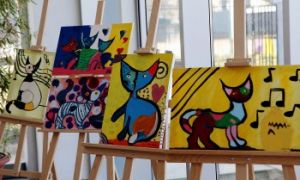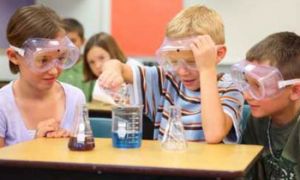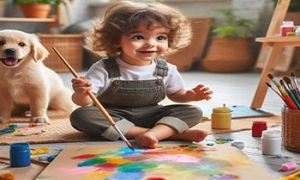To support children achieve learning outcomes from the MTOP Framework, the following list gives educators examples of how to support and facilitate the children attain their goals. It also provides examples on how to promote each individual outcome throughout an OOSH setting.
Learning Outcome 1: Children have a strong sense of identity
1.1 - Children feel safe, secure, and supported
Educators facilitate this when they:
- spend time interacting and conversing with children, listening and responding sensitively as they express their ideas and needs
- support children’s attachment through consistent and warm nurturing relationships
- support children in times of change and bridge the gap between the familiar and the unfamiliar
- recognise that feelings of distress, fear of discomfort may take some time to resolve
- acknowledge each child’s uniqueness in positive ways
- support the development of children’s friendships
- acknowledge the importance of opportunities for children to relax through play and leisure
1.2 - Children develop their autonomy, inter-dependence, resilience and sense of agency
Educators facilitate this when they:
- encourage children to make choices and decisions
- encourage children to collaborate with peers and educators to plan programs
- provide children with strategies to make informed choices about their behaviours
- promote children’s sense of belonging, connectedness and wellbeing
- maintain high expectations of each child’s capabilities
- mediate and assist children to negotiate their rights in relation to the rights of others
- display encouragement and enthusiasm for children’s attempts
- motivate and encourage children to succeed when they are faced with challenges
- provide time and environment for children to engage in both individual and collaborative pursuits
1.3 Children develop knowledgeable and confident self identities
Educators facilitate this when they:
- listen to and learn about children’s understandings of themselves, who they are and their connectedness to others – a shared identity as Australians ensure all children experience pride and confidence in their achievements
- share children’s successes with families
- show respect for and a deep understanding of diversity, acknowledging the varying approaches of children, families, communities and cultures
- acknowledge and understand that children construct meaning in many different ways
- maintain and build on the knowledge, languages and understandings that children bring
- talk with children in respectful ways about similarities and differences in people, identities and culture
- provide rich and diverse resources that reflect children’s social worlds
1.4 Children learn to interact in relation to others with care, empathy and respect
Educators facilitate this when they:
- organise environments and spaces in ways that promote small and large group interactions and meaningful play and leisure
- model care, empathy and respect for children, staff and families
- initiate one-to-one interactions with children
- model explicit communication strategies to support children to sustain productive relationships with other children in play and social experiences
- acknowledge children’s complex relationships and sensitively intervene in ways that promote consideration of alternative perspectives and social inclusion
Learning Outcome 2: Children are connected with and contribute to their world
2.1 Children develop a sense of belonging to groups and communities and an understanding of the reciprocal rights and responsibilities necessary for active community participation
Educators facilitate this when they:
- promote a sense of community within the school age care setting
- build connections between the school age care setting, schools and the local community
- provide opportunities for children to investigate ideas, complex concepts and ethical issues that are relevant to their lives and their local communities
- model language and actions that children can use to express ideas, negotiate roles and collaborate to achieve goals
- scaffold children’s opportunities to participate and contribute to group activities
- plan opportunities for children to participate in significant ways in group discussions and shared decision-making about rules and expectations and activities
2.2 Children respond to diversity with respect
Educators facilitate this when they:
- plan experiences and provide resources that broaden children’s perspectives and encourage appreciation of diversity
- engage in interactions with children that promote respect for diversity and value distinctiveness
- expose children to different languages and dialects and encourage appreciation of linguistic diversity
- encourage children to listen to others and to respect diverse perspectives
- demonstrate positive responses to diversity in their own behaviour
- explore the culture, heritage, backgrounds and traditions of children within the context of their community
2.3 Children become aware of fairness
Educators facilitate this when they:
- notice and listen carefully to children’ concerns and discuss diverse perspectives on issues of inclusion and exclusion and fair and unfair behaviour
- engage children in discussions about respectful and equal relations such as when a child dominates in the use of resources
- analyse and discuss with children ways in which stereotypes are portrayed
- draw children’s attention to issues of fairness relevant to them in the school age care setting and community
2.4 Children become socially responsible and show respect for the environment
Educators facilitate this when they:
- embed sustainability in daily routines and practices
- discuss the ways the life and health of living things are interconnected
- collaborate to develop daily routines and practices that embrace sustainability
- work together with children to show respect, care and appreciation for the natural environment
- provide children with access to a range of natural materials in their environment
- enable children to care for and learn from the land
- discuss the nature of children’s connectedness to the land and demonstrate respect for community protocols
Learning Outcome 3: Children have a strong sense of wellbeing
3.1 Children become strong in their social and emotional wellbeing
Educators facilitate this when they:
- show care, understanding and respect for all children
- collaborate with children to plan and document their achievements and share their successes with their families
- challenge and support children to engage and persevere
- build upon and extend children’s ideas
- maintain high expectations of each child’s capabilities
- affirm children’s decision-making and efforts
- welcome children and families, sharing aspects of their culture and spiritual lives
- discuss emotions, responses to events, emotional regulation and self-control
- collaborate with children to negotiate their rights in relation to the rights of others
- provide time and space for children to challenge and practice physical prowess
3.2 Children take increasing responsibility for their own health and physical wellbeing
Educators facilitate this when they:
- collaborate to plan energetic physical activities, including dance, drama, movement, sports and games
- draw on family and community experiences and expertise to include familiar games and physical activities
- provide a wide range of resources to develop and consolidate children’s fine and gross motor skills
- engage children in experiences, conversations and routines that promote safety, healthy lifestyles and nutrition
- provide a range of active and relaxing experiences throughout the day
- adjust transition and routines to take into account children’s needs and interests
Learning Outcome 4: Children are confident and involved learners
4.1 Children develop dispositions such as curiosity, cooperation, confidence, creativity, commitment, enthusiasm, persistence, imagination and reflexivity
Educators facilitate this when they:
- recognise and value children’s involvement in a variety of play experiences
- provide environments that are flexible and open-ended
- respond to children’s dispositions by commenting on them and providing encouragement and additional ideas
- encourage children to engage in both individual and collaborative explorative and reflective processes
- listen carefully to children’s ideas and discuss with them how these ideas might be developed
- model inquiry processes, including observation, curiosity and imagination, try new ideas and take on challenges
- explore the diversity of cultures and social identities
4.2 Children use a range of skills and processes such as problem solving, enquiry, experimentation, hypothesising, researching and investigating
Educators facilitate this when they:
- plan environments with appropriate levels of challenge where children are encouraged to explore, experiment and take appropriate risks
- provide experiences that encourage children to investigate ideas, solve problems and use complex concepts and thinking, reasoning and hypothesising
- encourage children to communicate and make visible their own ideas and theories
- collaborate with children and model reasoning, predicting and reflecting processes and language
- provide opportunities for children to initiate and lead activities and experiences
4.3 Children transfer and adapt what they have learned from one context to another
Educators facilitate this when they:
- support children applying their learning in new ways and talk about this with them in ways that grow their understanding
- support children to construct multiple solutions to problems and use different ways of thinking
- plan for time and space where children discuss and reflect to see similarities and connections between existing and new ideas
- share and transfer knowledge about children’s understandings from one setting to another, by exchanging information with families and with professionals in other settings
- understand that competence is not tied to any particular language, dialect or culture
4.4 Children resource their own learning through connecting with people, place, technologies and natural and processed materials
Educators facilitate this when they:
- provide opportunities for choice and collaboration
- involve children in the broader community beyond the school age care setting
- create possibilities for peer scaffolding
- introduce appropriate tools, technologies and media and provide the skills, knowledge and techniques
- develop their own confidence with technologies available to children in the setting
- provide resources that encourage children to represent their thinking
Learning Outcome 5 - Children are effective communicators
5.1 Children interact verbally and non-verbally with others for a range of purposes
Educators facilitate this when they:
- respond sensitively and appropriately to children’s conversations
- value children’s linguistic heritage and with family and community members encourage the use of and acquisition of home languages and Standard Australian English
- collaborate about routines and procedures
- model language and encourage children to express themselves through language in a range of contexts and for a range of purposes including leading and following directions
- engage in sustained communication with children about ideas and experiences
- include real-life experiences and resources to promote children’s use of literacy and numeracy
- allow children to direct their own play experiences with their peers
5.2 Children engage with a range of texts and gain meaning from these texts
Educators facilitate this when they:
- provide opportunities for children to follow directions from everyday texts such as recipe books, instructions for craft, rules for sports or games.
- read and share a range of books, magazines and newspapers with children
- provide a literacy-enriched environment including display print in home languages and Standard Australian English
- incorporate familiar family and community texts and tell stories
- encourage children to share their interests in music and discuss lyrics
- engage children in discussions about books and other texts that promote consideration of diverse perspectives
5.3 Children collaborate with others, express ideas and make meaning using a range of media and communication technologies
Educators facilitate this when they:
- build on children’s family and community experiences with creative and expressive arts
- provide a range of resources that enable children to express meaning using photography, visual arts, dance, drama and music
- join in children’s play and leisure activities and co-construct materials, for example signs, posters and journals that extend and support literacy learning
- collaborate with children to record the shared activities undertaken
- integrate technologies into children’s play and leisure experiences, projects and routines
- encourage the use of technologies between children, and children and educators
- discuss protocols about use of communication technologies


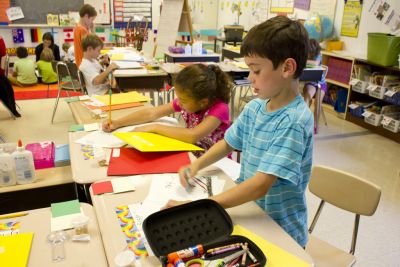
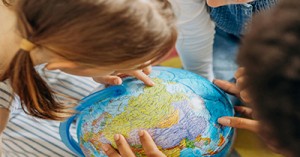
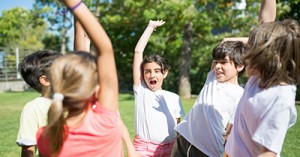
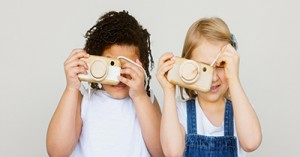

 Here is the list of the EYLF Learning Outcomes that you can use as a guide or reference for your documentation and planning. The EYLF
Here is the list of the EYLF Learning Outcomes that you can use as a guide or reference for your documentation and planning. The EYLF The EYLF is a guide which consists of Principles, Practices and 5 main Learning Outcomes along with each of their sub outcomes, based on identity,
The EYLF is a guide which consists of Principles, Practices and 5 main Learning Outcomes along with each of their sub outcomes, based on identity, This is a guide on How to Write a Learning Story. It provides information on What Is A Learning Story, Writing A Learning Story, Sample
This is a guide on How to Write a Learning Story. It provides information on What Is A Learning Story, Writing A Learning Story, Sample One of the most important types of documentation methods that educators needs to be familiar with are “observations”. Observations are crucial for all early childhood
One of the most important types of documentation methods that educators needs to be familiar with are “observations”. Observations are crucial for all early childhood To support children achieve learning outcomes from the EYLF Framework, the following list gives educators examples of how to promote children's learning in each individual
To support children achieve learning outcomes from the EYLF Framework, the following list gives educators examples of how to promote children's learning in each individual Reflective practice is learning from everyday situations and issues and concerns that arise which form part of our daily routine while working in an early
Reflective practice is learning from everyday situations and issues and concerns that arise which form part of our daily routine while working in an early Within Australia, Programming and Planning is reflected and supported by the Early Years Learning Framework. Educators within early childhood settings, use the EYLF to guide
Within Australia, Programming and Planning is reflected and supported by the Early Years Learning Framework. Educators within early childhood settings, use the EYLF to guide When observing children, it's important that we use a range of different observation methods from running records, learning stories to photographs and work samples. Using
When observing children, it's important that we use a range of different observation methods from running records, learning stories to photographs and work samples. Using This is a guide for educators on what to observe under each sub learning outcome from the EYLF Framework, when a child is engaged in
This is a guide for educators on what to observe under each sub learning outcome from the EYLF Framework, when a child is engaged in The Early Years Learning Framework describes the curriculum as “all the interactions, experiences, activities, routines and events, planned and unplanned, that occur in an environment
The Early Years Learning Framework describes the curriculum as “all the interactions, experiences, activities, routines and events, planned and unplanned, that occur in an environment